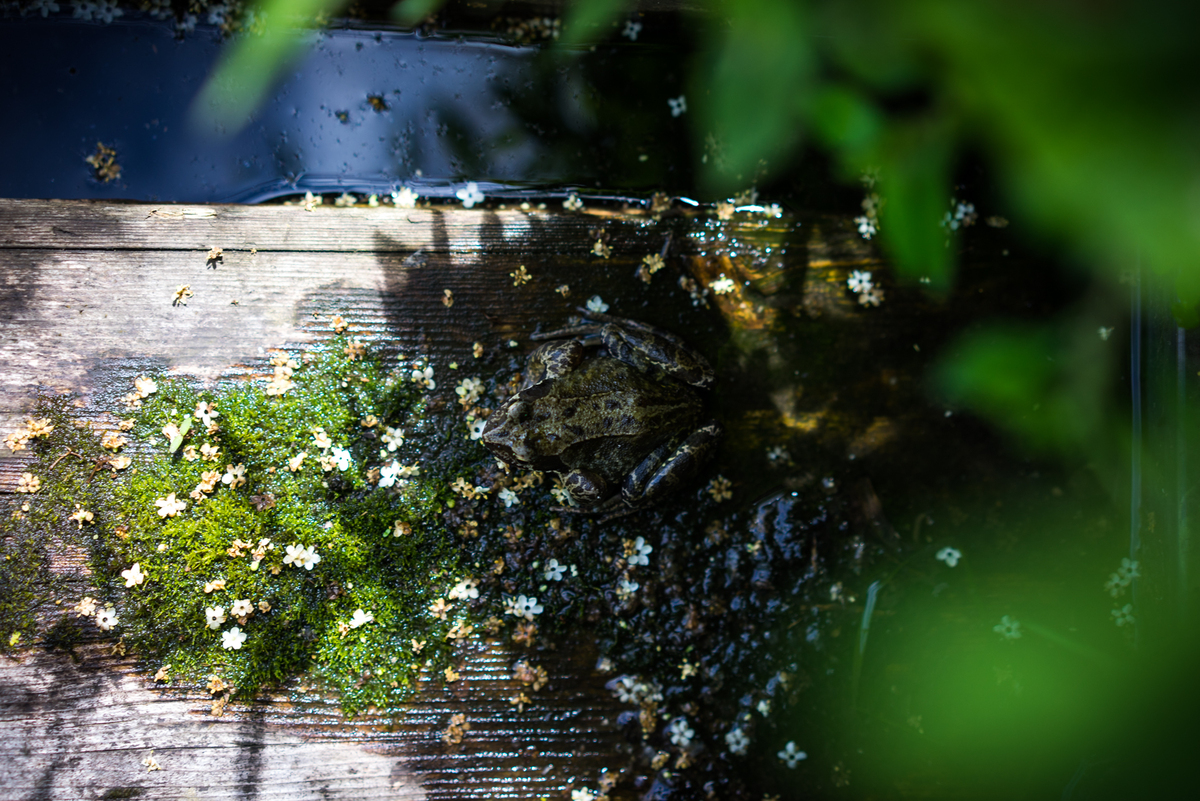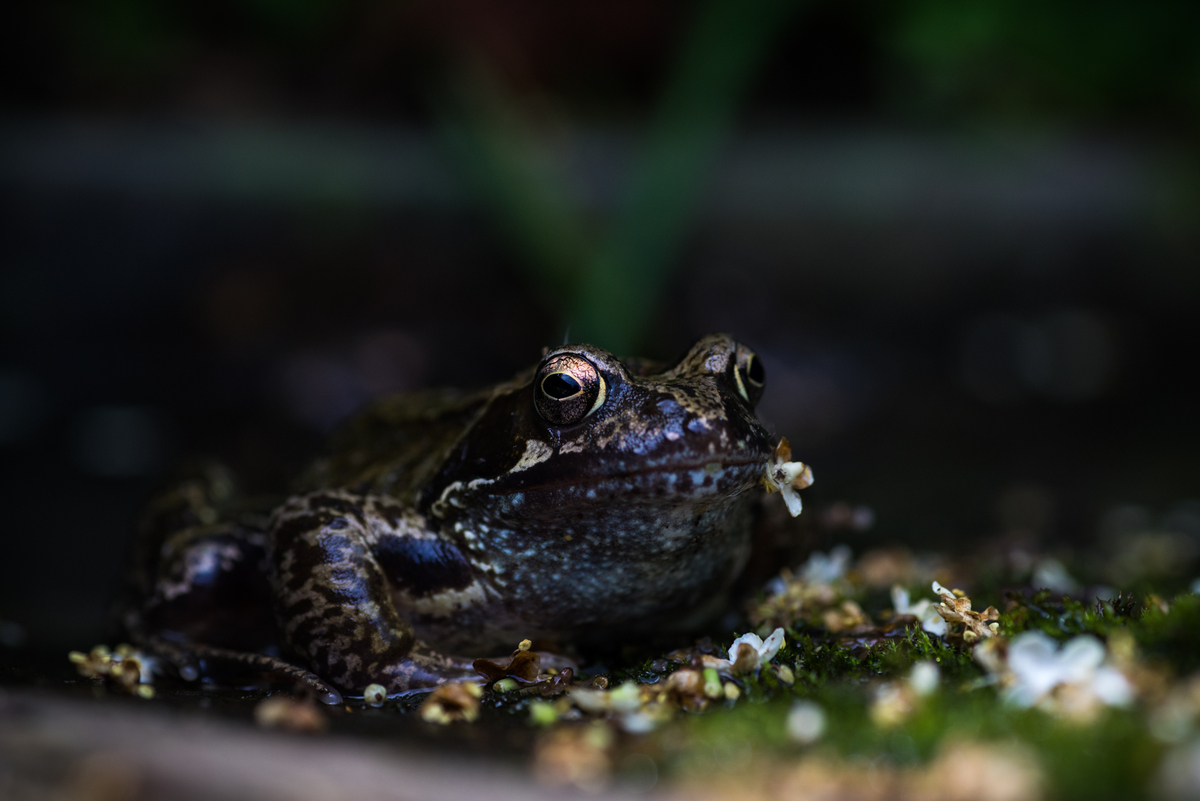蛙の生活 - Froglife
View fullsize

There are many frogs in the garden, but this one was still for just long enough…
View fullsize

The Common Frog is easily our most recognisable amphibian. They’re found throughout Britain and Ireland, in almost any habitat where suitable breeding ponds are near by. Common Frogs have smooth skin and long legs for jumping away quickly. Garden ponds are extremely important for common frogs, particularly in urban areas.
IdentificationAdults males grow up to 9 cm in length and females up to 13 cm in length. Usually a shade of olive-green or brown (although can be yellow, pink, red, lime-green, cream or black). Dark patches on the back, stripes on the hind legs, and a dark ‘mask’ behind the eye. Oval, horizontal pupil.Call: soft repetitive croak.
DistributionNative to the UK. Found throughout Britain and Ireland.Widespread and common across Europe but numbers thought to be declining.
EcologyBreed in shallow water bodies such as puddles, ponds, lakes, and canals. Tend to be most active at night when they feed on a wide variety of invertebrates. During winter they hibernate under rocks, in compost heaps, or underwater buried in mud and vegetation.Deposit ‘rafts’ of spawn, often containing up to 2000 eggs. Each small black egg is surrounded by a clear jelly capsule around 1 cm across. Common Frog tadpoles are black when they hatch but develop light bronze speckles as they mature.
Predators and other threatsThreatened by degradation of habitats and the introduction of disease.
--
Source: http://www.froglife.org/amphibians-and-reptiles/common-frog-2/
Video Block
Double-click here to add a video by URL or embed code. Learn more
[youtube https://www.youtube.com/watch?v=?wmode=opaque]